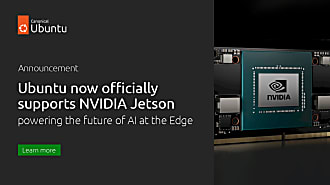Mark Shuttleworth
on 8 March 2014
Check out “loving the bottom edge” for the most important bit of design guidance for your Ubuntu mobile app.
This work has been a LOT of fun. It started when we were trying to find the zen of each edge of the screen, a long time back. We quickly figured out that the bottom edge is by far the most fun, by far the most accessible. You can always get to it easily, it feels great. I suspect that’s why Apple has used the bottom edge for their quick control access on IOS.
We started in the same place as Apple, thinking that the bottom edge was so nice we wanted it for ourselves, in the system. But as we discussed it, we started to think that the app developer was the one who deserved to do something really distinctive in their app with it instead. It’s always tempting to grab the tastiest bit for oneself, but the mark of civility is restraint in the use of power and this felt like an appropriate time to exercise that restraint.
Importantly you can use it equally well if we split the screen into left and right stages. That made it a really important edge for us because it meant it could be used equally well on the Ubuntu phone, with a single app visible on the screen, and on the Ubuntu tablet, where we have the side stage as a uniquely cool way to put phone apps on tablet screens alongside a bigger, tablet app.
The net result is that you, the developer, and you, the user, have complete creative freedom with that bottom edge. There are of course ways to judge how well you’ve exercised that freedom, and the design guidance tries to leave you all the freedom in the world while still providing a framework for evaluating how good the result will feel to your users. If you want, there are some archetypes and patterns to choose from, but what I’d really like to see is NEW patterns and archetypes coming from diverse designs in the app developer community.
Here’s the key thing – that bottom edge is the one thing you are guaranteed to want to do more innovatively on Ubuntu than on any other mobile platform. So if you are creating a portable app, targeting a few different environments, that’s the thing to take extra time over for your Ubuntu version. That’s the place to brainstorm, try out ideas on your friends, make a few mockups. It’s the place you really express the single most important aspects of your application, because it’s the fastest, grooviest gesture in the book, and it’s all yours on Ubuntu.
Have fun!




